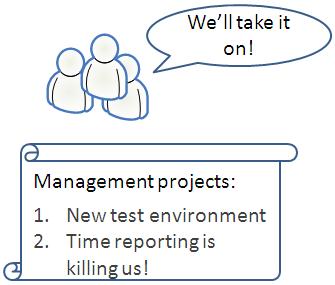For long impediments (> 1 sprint) unsovable by teams on their own, a demoralizing effect can quickly occur if issues brought up are removed just because there is no "quick fix". Apart from being a "pat on the head" and display of not-so-great-leadership, this is potentially dangerous since you could wind up miss out on the biggest improvement benefits.
But we must also acknowledge resources are not unlimited, even for a management team (yes!!). So we could encounter the same demoralizing effect by taking on too much.
It boils down to: acceptance and visibility to efforts to tackle it. So this is how I prefer to do it:
Management team assigns two to three rolling slots for fixing impediments.

Impedients accepted are put up visible on CEO’s door (or someone else in management team) Now management has set expectations to what impediments they are actually fixing (thus growing trust). At sprint retrospective, that list is reviewed.
Now teams don’t need to feel deceived if an impediment is removed from the daily agenda since they have visibility to what is going on.




Good point. I believe there always persistent impediments, sooner or later. So we all need to know this dance.